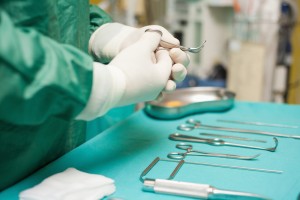The Maryland Court of Appeals> overturned a lower court in a 4-3 decision in Goldberg v. Boone, a Montgomery County informed consent case.
Facts of Goldberg v. Boone
Plaintiff underwent a mastoidectomy (an operation on the mastoid bone, which is the prominent bone behind the ear, to remove a cholesteatoma (a rare condition in which skin cells proliferate and debris collects within the middle ear). During the procedure, the doctor accidentally drilled a hole into Plaintiff’s skull.
Sixteen years later, Plaintiff saw the medical malpractice defendant otolaryngologist in Rockville, Maryland. The Defendant doctor determined that Plaintiff had another cholesteatoma and performed an outpatient revisionary mastoidectomy on Plaintiff to remove the second cholesteatoma.
The day after the procedure, Mr. Boone began having trouble reading, remembering names, and recalling words. Subsequent MRI and CT scans revealed hemorrhaging and an opening in his skull.
Plaintiff’ filed a complaint against the subsequent doctor, alleging the doctor committed malpractice by negligently puncturing the Plaintiff’s brain with a surgical instrument during the revisionary mastoidectomy, causing serious and permanent brain damage. The plaintiff also alleged that the defendant’s medical doctor failed to inform him that, because of the hole in his skull, the procedure would be more complex than a standard revisionary mastoidectomy and that there was a risk of sustaining brain damage from the procedure.
The plaintiff alleged that there were surgeons more experienced available to perform the procedure in Maryland than the defendant who had performed only one revisionary mastoidectomy in the past three years.
Jury Award
After two days of deliberations, the jury awarded Plaintiff $113,000 for loss of past and future earning capacity, $355,000 for past and future medical expenses, and $475,000 for non-economic damages. The total award was $943,000.
Maryland Court of Appeals Opinion
The Maryland Court of Appeals’ opinion is long. I think two issues are of particular interest: one just for general interest; the second makes what may not be new law but flushes out the extent to which the decision on what they leave to the jury. The issues are:
(1) Where a retained expert is asked a single cross-examination question about his prior inconsistent testimony when testifying on behalf of one infamous Maryland sniper defendant, does that question warrant reversal of the denial of a mistrial motion?
(2) Whether it is a jury question on informed consent when the defendant medical doctor did not disclose his relative inexperience in performing the procedure and advising the Plaintiff that there were more experienced doctors in Maryland available to perform the procedure. Continue reading
 Maryland Injury Law Center
Maryland Injury Law Center


